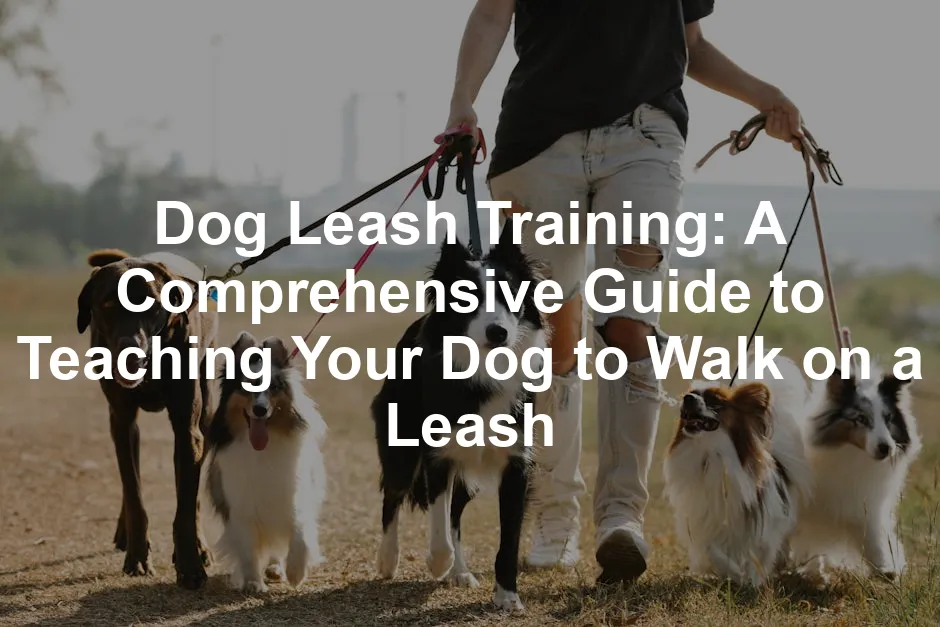Introduction
Leash training is vital for every dog. It makes walks enjoyable for both you and your furry friend. Without proper training, walks can turn into frustrating experiences. Many owners face challenges like pulling or lunging. However, effective leash training reduces these issues and strengthens your bond with your dog.
Summary and Overview
Leash training involves teaching your dog to walk politely beside you. It’s essential for safety, obedience, and fun outings together. Well-trained dogs are easier to manage in public, making walks stress-free. In this guide, we will cover various training techniques, common problems, and tips for troubleshooting. You’ll learn how to equip yourself for success and create a positive training environment. By the end, you and your dog will look forward to your walks!
Understanding the Importance of Leash Training
Leash training is crucial for dog owners. It promotes safe and enjoyable walks. A well-trained dog is more likely to remain calm and focused. This reduces the risk of accidents in busy areas. Both dogs and owners benefit from leash training. It fosters a strong bond and encourages good behavior. Dogs learn to trust their owners, leading to improved obedience.
In many places, leash laws require dogs to be leashed in public areas. Following these regulations keeps your dog safe and prevents potential fines. A well-trained dog can navigate various environments without fear or anxiety. This opens up opportunities for socialization and exercise. With consistent training, you can enjoy daily outings without stress. Remember, leash training is an investment in your dog’s behavior and your peace of mind.
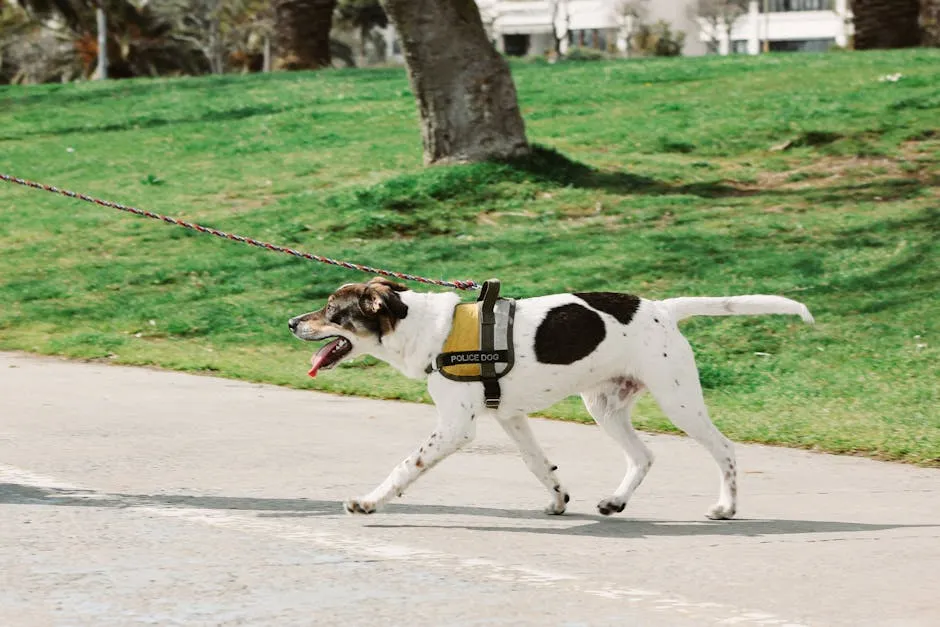
Understanding leash training is vital for establishing good behavior in dogs. For more insights, check out how to use positive reinforcement for dog obedience training.
Essential Gear for Leash Training
To start leash training, having the right gear is essential. First, choose a sturdy leash. A standard 4 to 6-foot leash is ideal. Avoid retractable leashes, as they can encourage pulling. Next, consider a suitable collar or harness. Flat collars are common, but harnesses are gentler on your dog’s neck. Front-clip harnesses can help reduce pulling. One excellent option is the PetSafe Easy Walk Dog Harness. It’s designed to discourage pulling and make walks more enjoyable for both of you!
Additional equipment includes treats for positive reinforcement and clickers for marking good behavior. A treat pouch can keep your rewards handy. Having poop bags on hand is also essential for responsible ownership. With the right gear, you can set your dog up for successful leash training.
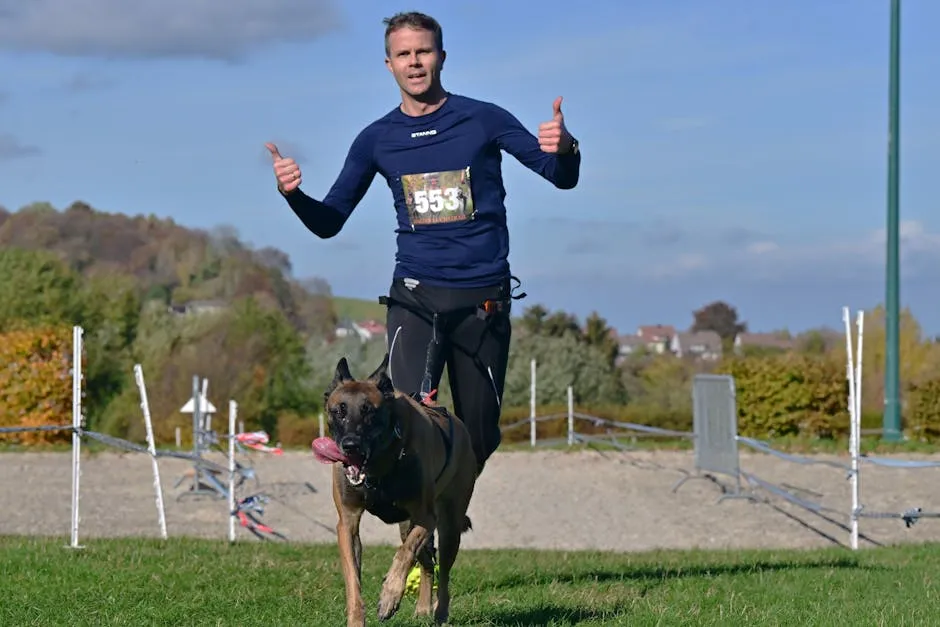
Choosing the Right Leash
Selecting the right leash is key to successful training. Standard leashes, typically 4 to 6 feet long, offer the best control. They prevent your dog from straying too far. Retractable leashes might seem convenient, but they can encourage pulling. This can make training harder. Choose a durable material like nylon or cotton webbing. These materials are comfortable for you and your dog. Consider the TUG 360° Tangle Free Dog Leash—it’s a game changer!
Selecting a Suitable Collar or Harness
Choosing the right collar or harness is essential. Flat collars are common, but they may not be ideal for all dogs. Martingale collars can prevent escape while being gentle on the neck. Head halters offer more control, especially for strong pullers. When it comes to harnesses, options include front-clip and back-clip designs. Front-clip harnesses help reduce pulling effectively. Ensure a proper fit to prevent injury or escape. A well-fitted collar or harness makes the training process smoother.
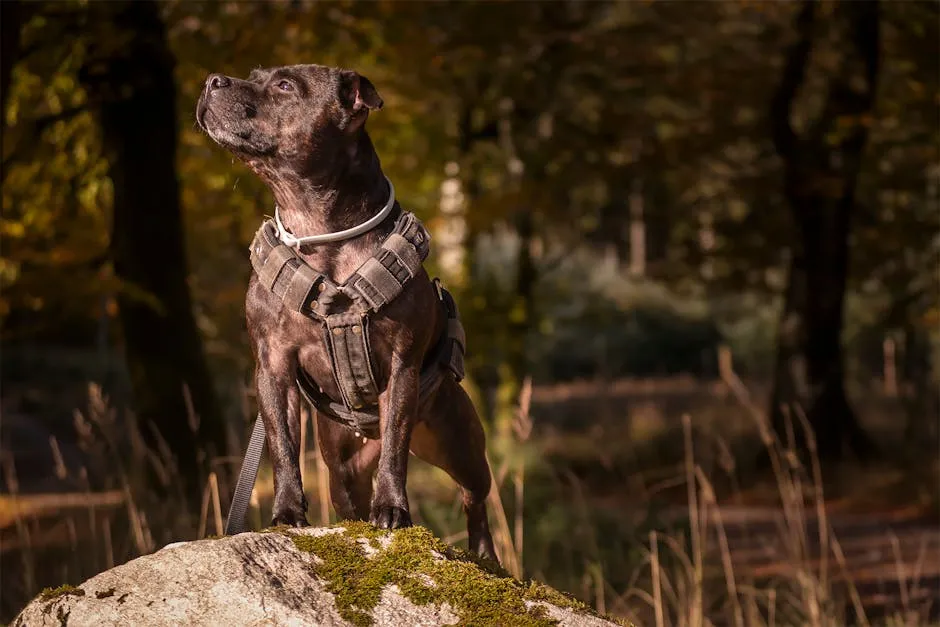
Additional Equipment
In addition to a leash and collar or harness, some extra tools can aid training. Treats are crucial for positive reinforcement. Use high-value treats to motivate your dog. Clickers can also help by marking good behavior instantly. Always keep them close during training sessions. Don’t forget poop bags; they are essential for responsible dog ownership. You can find some great options like AmazonBasics Dog Poop Bags that are both durable and affordable!
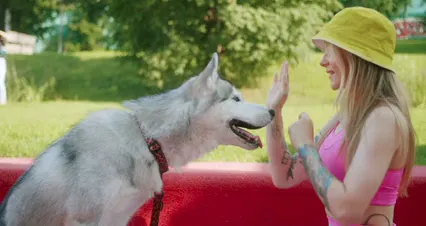
Step-by-Step Guide to Leash Training
Introduction to the Leash and Harness
Getting your dog used to a leash and harness is crucial before starting actual training. Begin indoors in a distraction-free zone. Put the harness on your dog for short periods. Let them wear it while playing or relaxing.
Use treats to create positive associations. Each time they wear the harness, reward them. Attach the leash for brief moments. Allow your dog to walk around your home with it attached. This helps them get comfortable.
Next, practice walking around your space. Encourage them to follow you. Praise and reward their movements. Gradually increase the duration they wear the harness and leash. Soon, they’ll associate the gear with fun and positive experiences.
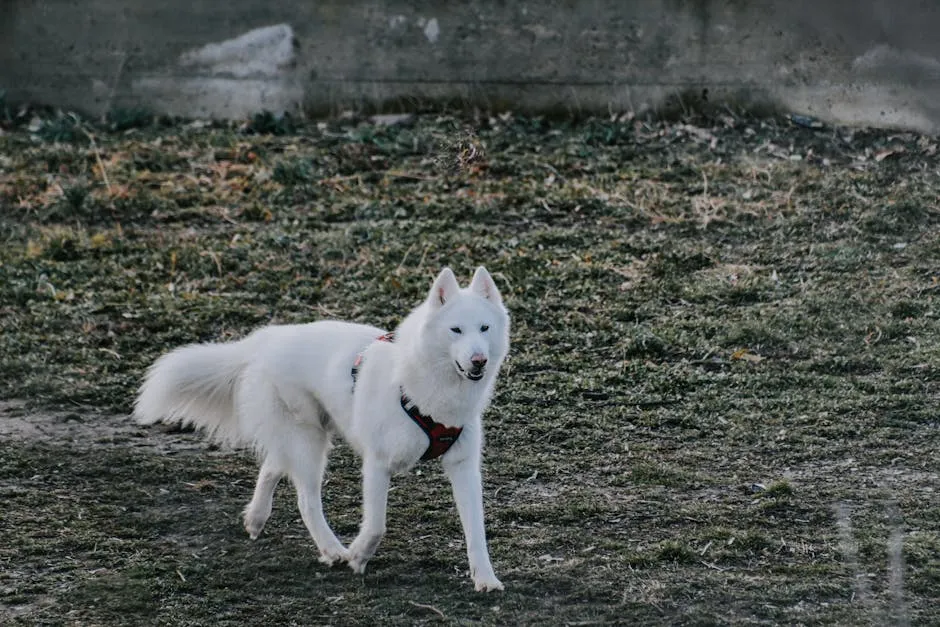
Teaching Basic Commands
Start by teaching basic commands like “heel” and “slow.” Use treats to reinforce these cues. When your dog walks beside you, say “heel” and reward them. Consistency is crucial. Repeat this during each training session. You can also use a PetFusion Ultimate Dog Training Clicker to mark those good behaviors!
For the “slow” command, slow your pace and encourage your dog to match. When they do, reward them with treats and praise. This helps them understand what you expect.
Gradually, practice these commands during walks. Use short sessions to maintain your dog’s focus. Always end on a positive note. This keeps your dog engaged and eager for the next session.
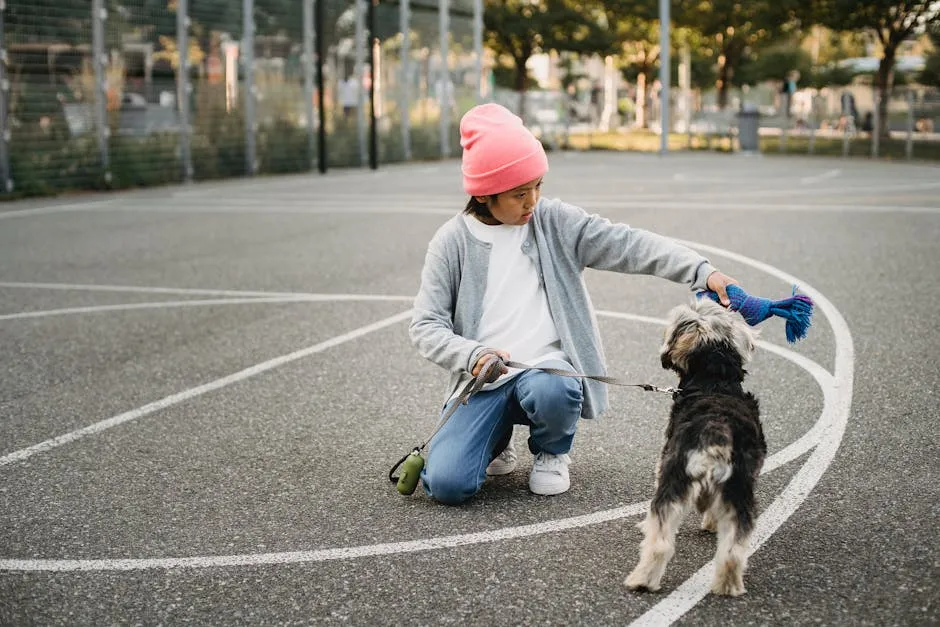
Practicing Loose Leash Walking
Teaching loose leash walking takes practice. Start with your dog on a leash beside you. Keep the leash slack, allowing them to walk comfortably. If they pull ahead, stop walking. Wait for the leash to go slack before moving again.
Change directions often. If your dog pulls, turn 180 degrees and walk the other way. This encourages them to pay attention to you. Use treats to guide them back to your side.
Encourage them to walk beside you without pulling. Reward them for staying close. Gradually increase the distance you walk together. Practice in different environments to help them adapt.
Remember to keep sessions short and fun. Your dog will learn faster when they enjoy the process. With time and patience, they’ll master walking politely on a leash.
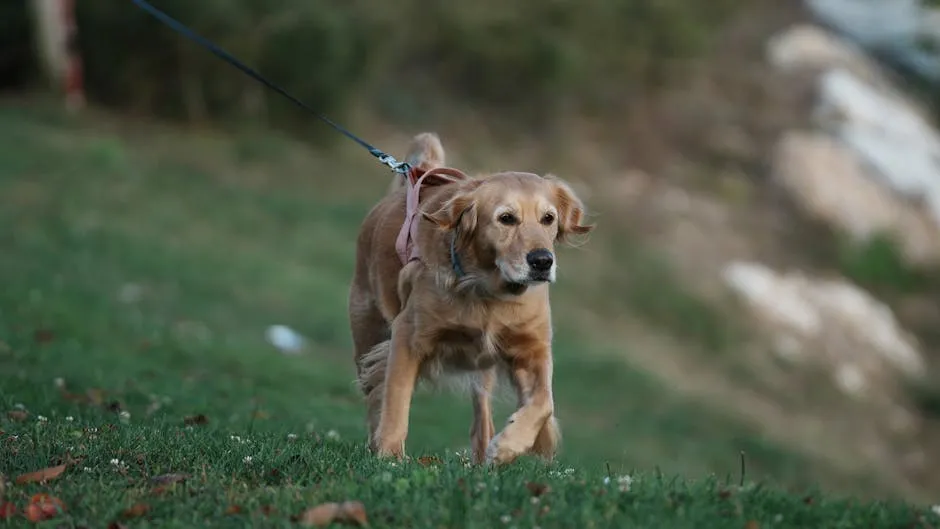
Gradual Exposure to Distractions
When transitioning from indoor to outdoor leash training, it’s crucial to take baby steps. Start by practicing in your yard. This familiar space helps your dog feel secure. Begin with short sessions, focusing on basic commands. As your dog becomes more comfortable, gradually move to quieter outdoor areas. Parks with fewer distractions are ideal for initial outings.
Once your dog masters walking in a calm environment, it’s time to introduce distractions. Begin with light distractions like passing cars or distant people. If your dog loses focus, simply pause until they regain it. After they are calm, reward them with praise or treats. This reinforces their attention on you.
For walks in busier areas, keep these tips in mind. First, maintain a loose leash. A tight leash can signal to your dog that something is wrong. If they fixate on a distraction, redirect their attention by calling their name. Use treats to lure them back to your side.
Also, practice changing directions when distractions arise. This keeps your dog engaged and aware of your movements. If they pull ahead, turn around and walk in the opposite direction. This encourages them to stay close. Remember, patience is key. Gradually increase the level of distractions as your dog becomes more adept at focusing on you.
Incorporate positive reinforcement throughout your training. Celebrate small wins and build their confidence. Over time, your dog will learn to navigate various environments calmly. This approach not only helps with leash training but also strengthens your bond with your furry friend.

Weaning Off Treats
Transitioning your dog from relying on treats to performing well on a leash requires a thoughtful approach. Start by gradually reducing the number of treats given during training. Instead of treating every time your dog walks nicely, try rewarding them every other time or even every third time. This method helps decrease dependency while still maintaining motivation.
Using praise and affection can be just as rewarding. Verbal praise, petting, or a favorite toy can reinforce good behavior. Make sure to celebrate their achievements to keep their spirits high. You might want to consider a KONG Classic Dog Toy as a fun way to reward and entertain your pup while training!
Implementing variable rewards can also enhance engagement. This means you reward your dog unpredictably, keeping them guessing when the next treat will come. This approach can heighten their interest and focus during walks. The unpredictability keeps your dog eager to perform, as they never know when their next reward will arrive.
By using a mix of treats, praise, and variable rewards, you can effectively wean your dog off treats while ensuring they maintain good behavior on the leash.
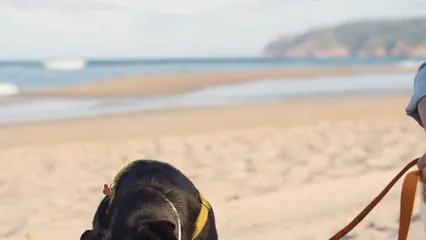
Continuing Training and Reinforcement
To maintain good leash manners, ongoing training is essential. Consider incorporating short training exercises into your daily routine. For instance, practice loose leash walking during each outing. Reward your dog with treats or praise when they walk calmly beside you. This reinforces positive behavior consistently. You can also use Dog Training Handbook by K. L. Johnson for more tips and techniques!
Regular socialization is also crucial. Expose your dog to different environments, people, and other dogs. This helps them learn to stay focused on you, even in distracting situations.
Additionally, mix up your training locations. Changing scenery can keep your dog engaged and attentive. Training in parks, neighborhoods, or even your backyard provides varied experiences that enhance their learning.
Consistency is key. Set aside time each week for focused training sessions. Just a few minutes a day can reinforce good leash behavior and strengthen your bond with your furry friend.

For effective training techniques, especially for stubborn dogs, explore effective positive reinforcement techniques for stubborn dogs.
FAQs
At what age should I start leash training my puppy?
It’s best to start leash training your puppy as soon as they come home, typically around 8 weeks old. Early exposure to a leash helps them get used to the idea and reduces anxiety about walking later.
What do I do if my dog continues to pull on the leash?
If your dog pulls on the leash, stop walking immediately. Wait for the leash to become slack before moving again. Additionally, consider using treats to redirect their attention back to you. Training them to respond to commands like “heel” or “come” can also help manage pulling behavior. By addressing pulling consistently, you can help your dog learn to walk calmly beside you.
Please let us know what you think about our content by leaving a comment down below!
Thank you for reading till here 🙂
All images from Pexels

